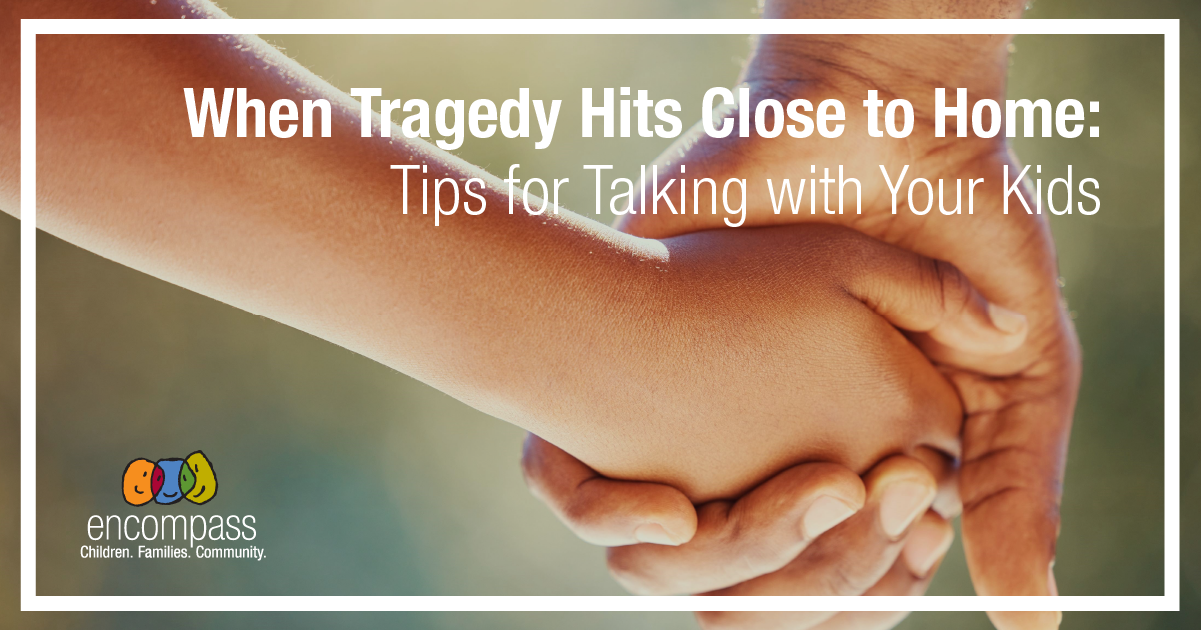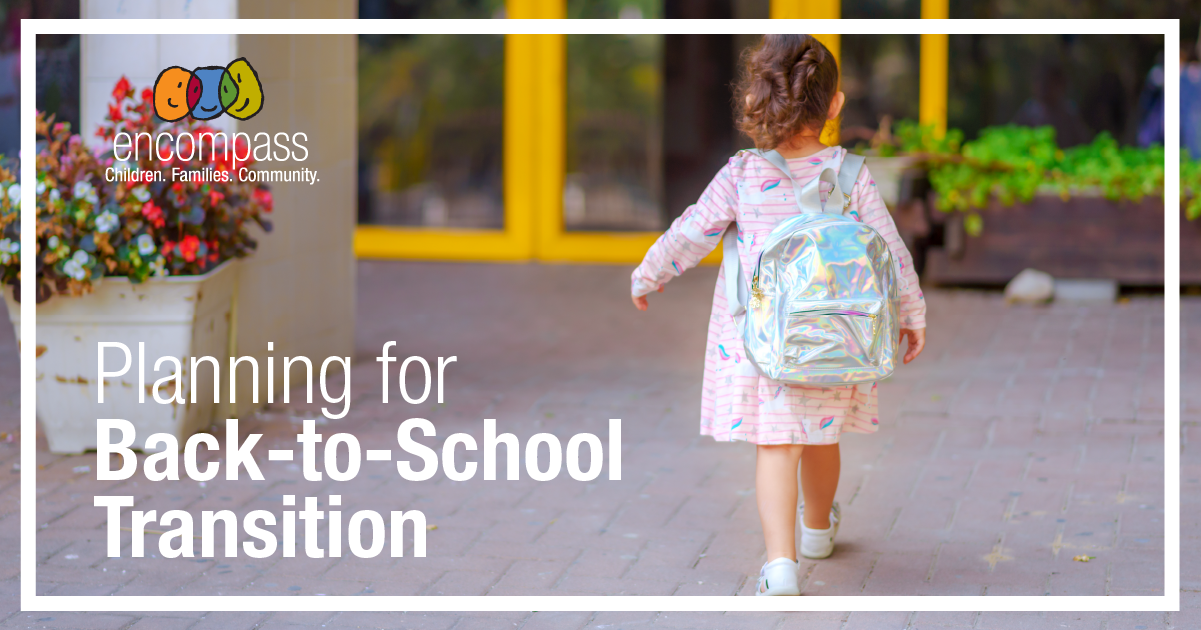Dealing with Behavioral Challenges from Disrupted Routines

By Sally Rasmussen, Encompass Special Educator, and Missy Budworth, Encompass Early Intervention Team Supervisor
Our tendency as humans to be “creatures of habit” has been disrupted with the COVID-19 outbreak. Kids, as well as us parents, benefit from routines to feel a sense of predictability and control in our lives. With the closure of schools and with more parents’ work schedules changing, normal routines have gone out the window, which means a diminished sense of control and security in each of us. With more people home than normal, this means children and parents are needing to find a new “normal” in their daily routine.
With these feelings of uncertainty, it is natural for children to start to act out and misbehave. This could be increased or new temper tantrums, clinginess, changes in appetite or sleep, and self-injurious or aggressive behaviors. These behaviors should be expected in light of all the changes happening in daily life and may be an unconscious effort at trying to regain predictability and the normal amount of time and attention they were getting from their parent or caregiver.
Take a moment to reflect and look at the world from the child’s perspective and try to understand what feelings their behaviors are expressing. It is also important for parents to reflect on their own feelings and how the stress of life right now has impacted their behavior at home.
While we are a long way from things feeling normal again, here are a few tips to help you and your child feel more calm and connected:
- Use a visual daily schedule. This does not need to be fancy, printed or laminated. Let a package of Post-It notes be your friend. Each morning, quickly make the schedule using a drawing or symbol. For example, a spoon for meal time, a train for playtime, etc. If parents make the schedule with the child, they will have better understanding of the symbols.
- Implement special play time with each child. Set aside 10 minutes at least once per day for one-on-one, child-led play. Copy your child’s actions and words, and do not try to direct the play. This is particularly important if the child is receiving less attention than normal due to older siblings being home.
- Use comfort mechanisms that the child liked when they were younger. For example: rocking, snuggling, songs, music, or a white noise machine.
- Have a word, phrase, sign, or gesture to indicate that the child needs mom or dad’s attention for a few minutes. Often kids use behavior as a negative way to get attention. Shaping that behavior into a positive behavior is the goal. When you notice this kind of behavior, try saying things like, “I think you are trying to get my attention,” or “It looks like you need some mommy time.” The sign, word, or gesture could be anything of your family’s choosing.
- Maintain consistent daily routines, including regular sleep and meal times. Consistency = security.
- Use consistent, repetitive language of “first/then.” For example: “First we are eating breakfast, and then we are going to the store.”
- Make sure parents and caregivers are practicing self care. You must take care of yourself in order for your child to be well cared-for. Make an active choice each day to fit something in for yourself to help you maintain your mental, emotional, and physical health. This will look different for everyone and does not need to take a lot of time or energy. It can be as simple as pausing and taking 3 deep breaths, getting outside for 15 minutes of sunshine, taking 5 minutes to de-clutter, or sitting in a quiet room for a few minutes.
If you are struggling right now and need additional support, you are encouraged to reach out to your local counselor for support and recommendations.














